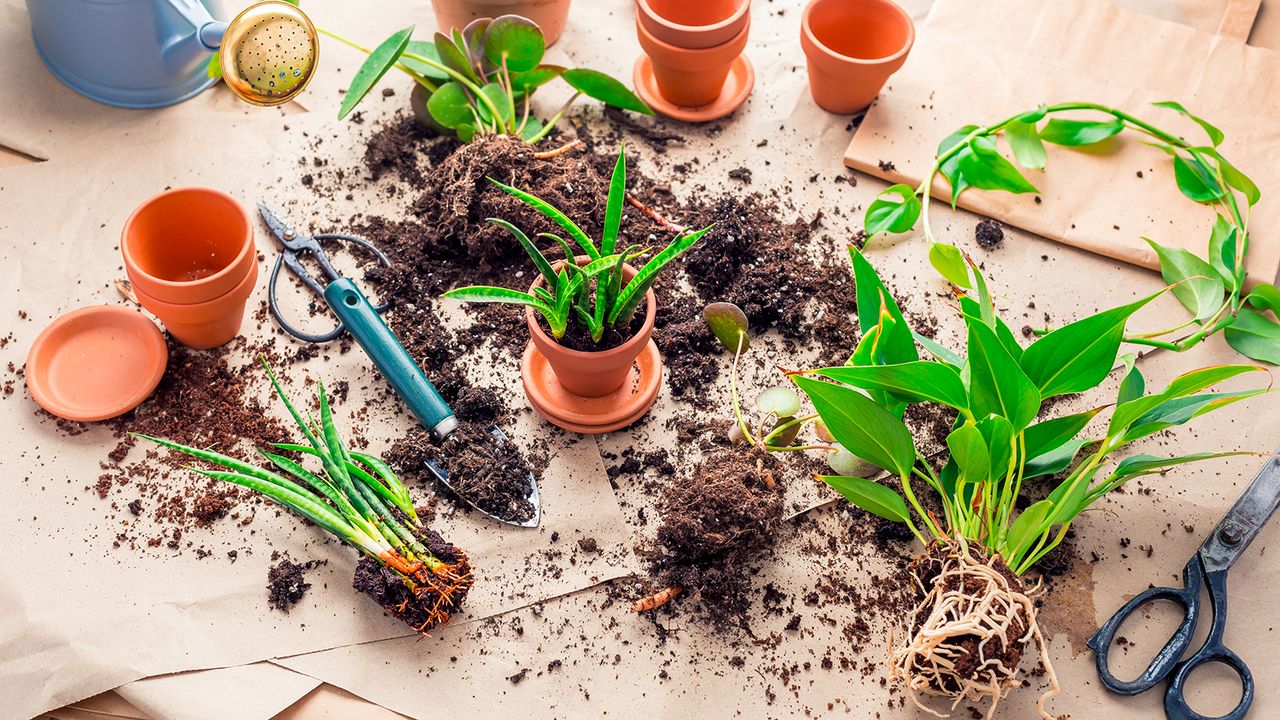Lifestyle
Enhance Your Garden: 7 Plants to Propagate This August

Propagating plants in your garden can be a rewarding experience, especially in August when many species are ready for cloning. This month is ideal, as numerous plants will have completed their summer flowering yet remain healthy and vigorous enough to produce new growth. Propagation allows gardeners to expand their collection without incurring the costs associated with purchasing new plants. Here are seven plants that are particularly well-suited for propagation this August.
1. Lavender
Lavender is a garden favorite, renowned for its soothing fragrance and vibrant purple flowers. It thrives as a pollinator plant and can be propagated effectively through cuttings rather than seeds, which can be challenging to establish.
To propagate lavender, select softwood cuttings from the newer growth. Use sharp shears to cut a few inches from the stems, avoiding any with flowers, as these can inhibit root development. Plant the cuttings in nutrient-rich soil to enhance rooting success. August is an optimal time for this process, as the plant is in full growth mode.
2. Verbena
Verbena, available in both annual and perennial varieties, is another excellent choice for propagation. It is particularly useful for gardeners in colder climates, where winter conditions may threaten survival.
For successful propagation, take cuttings in the morning when the stems are firm. Identify a leaf node at the end of the stalk and make your cut just below it, ensuring to remove lower leaves. Place the cuttings in gritty compost and keep them in a warm, bright area. This method promotes robust root formation.
3. Penstemon
Known for attracting bees and butterflies, Penstemon features striking tubular flowers. It can be propagated in late August, when the tips of non-flowering shoots are still soft, providing an ideal balance for rooting.
To propagate, cut stems several inches below a leaf joint. Ensure to avoid flowering stems and remove any remaining lower leaves. Plant the cuttings in well-draining soil, watering regularly, and keep them indoors until spring to protect against frost.
4. Rosemary
The culinary herb Rosemary is cherished for its aromatic leaves and versatility in cooking. Propagation is a straightforward way to maintain a fresh supply of this perennial herb.
Cuttings can be taken from either softwood or hardwood sections. In August, cut a few inches from the stems, removing all lower leaves. Place the cutting in water or soil, applying rooting hormone if desired. Ensure to keep the cutting moist and warm for optimal root development.
5. Boxwood
Boxwood provides a unique aesthetic with its dense evergreen foliage. Propagating boxwood can be somewhat tricky, so it’s advisable to take several cuttings to increase success rates.
When propagating, cut lengths of 3-4 inches from new growth, ensuring to scrape the bark slightly to encourage rooting. Utilize rooting hormone and place the cuttings in rooting soil to minimize nutrient exposure. This strategy reduces the risk of rot, which is crucial for successful propagation.
6. Coleus
With its vibrant foliage, Coleus is a popular choice for adding color to gardens. It thrives in shaded areas and can be propagated easily with minimal effort.
To propagate coleus, cut 4-6 inch pieces from healthy stems, stripping the lower half of the leaves. Place the cutting in moist soil, ensuring the bottom leaf node is submerged. Rooting hormone is optional, as coleus is known for its rapid rooting capabilities. Within 2-3 weeks, the cutting should have developed sufficient roots for transplanting.
7. Fuchsia
The distinctive Fuchsia offers an eye-catching addition to any garden with its unique teardrop-shaped flowers. While spring is often recommended for cuttings, August remains a viable option due to the availability of younger growth.
For successful propagation, cut healthy growth from the ends of younger branches, removing lower leaves before placing the cutting directly into moist growing soil. Keep the cuttings in a warm location, ensuring high humidity levels. Once roots have formed, repot as needed.
By taking advantage of these advantageous propagation techniques, gardeners can enhance their spaces and foster a diverse plant collection. Whether you are experienced or a novice gardener, August presents an excellent opportunity to expand your botanical horizons.
-

 Lifestyle3 months ago
Lifestyle3 months agoLibraries Challenge Rising E-Book Costs Amid Growing Demand
-

 Sports3 months ago
Sports3 months agoTyreek Hill Responds to Tua Tagovailoa’s Comments on Team Dynamics
-

 Sports3 months ago
Sports3 months agoLiverpool Secures Agreement to Sign Young Striker Will Wright
-

 Lifestyle3 months ago
Lifestyle3 months agoSave Your Split Tomatoes: Expert Tips for Gardeners
-

 Lifestyle3 months ago
Lifestyle3 months agoPrincess Beatrice’s Daughter Athena Joins Siblings at London Parade
-

 World3 months ago
World3 months agoWinter Storms Lash New South Wales with Snow, Flood Risks
-

 Science3 months ago
Science3 months agoTrump Administration Moves to Repeal Key Climate Regulation
-

 Science2 months ago
Science2 months agoSan Francisco Hosts Unique Contest to Identify “Performative Males”
-

 Business3 months ago
Business3 months agoSoFi Technologies Shares Slip 2% Following Insider Stock Sale
-

 Science3 months ago
Science3 months agoNew Tool Reveals Link Between Horse Coat Condition and Parasites
-

 Sports3 months ago
Sports3 months agoElon Musk Sculpture Travels From Utah to Yosemite National Park
-

 Science3 months ago
Science3 months agoNew Study Confirms Humans Transported Stonehenge Bluestones









